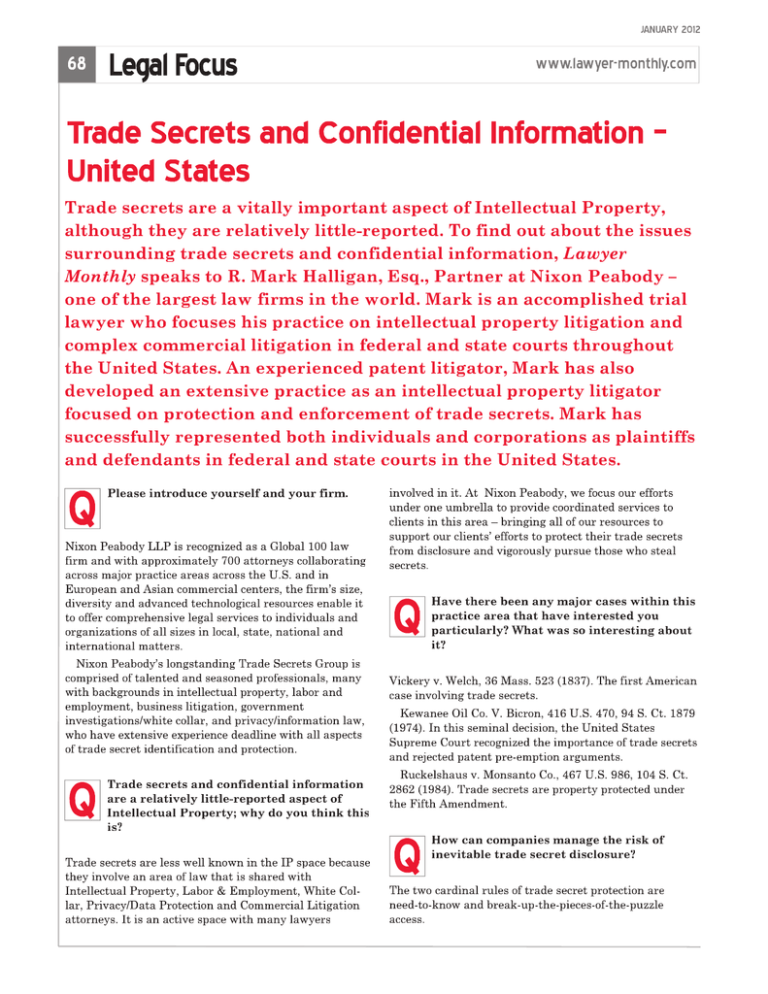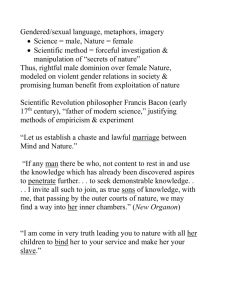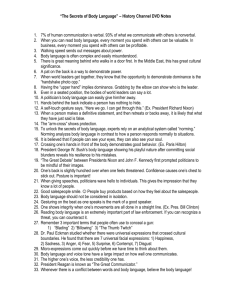Q Q Q Q - Nixon Peabody
advertisement

JANUARY 2012 www.lawyer-monthly.com Trade Secrets and Confidential Information United States Trade secrets are a vitally important aspect of Intellectual Property, although they are relatively little-reported. To find out about the issues surrounding trade secrets and confidential information, Lawyer Monthly speaks to R. Mark Halligan, Esq., Partner at Nixon Peabody one of the largest law firms in the world. Mark is an accomplished trial lawyer who focuses his practice on intellectual property litigation and complex commercial litigation in federal and state courts throughout the United States. An experienced patent litigator, Mark has also developed an extensive practice as an intellectual property litigator focused on protection and enforcement of trade secrets. Mark has successfully represented both individuals and corporations as plaintiffs and defendants in federal and state courts in the United States. Q Please introduce yourself and your firm. Nixon Peabody LLP is recognized as a Global 100 law firm and with approximately 700 attorneys collaborating across major practice areas across the U.S. and in European and Asian commercial centers, the firm's size, diversity and advanced technological resources enable it to offer comprehensive legal services to individuals and organizations of all sizes in local, state, national and international matters. Nixon Peabody's longstanding Trade Secrets Group is comprised of talented and seasoned professionals, many with backgrounds in intellectual property, labor and employment, business litigation, government investigations/white collar, and privacy/information law, who have extensive experience deadline with all aspects of trade secret identification and protection. Q Trade secrets and confidential information are a relatively little-reported aspect of Intellectual Property; why do you think this is? Trade secrets are less well known in the IP space because they involve an area of law that is shared with Intellectual Property, Labor & Employment, White Collar, Privacy/Data Protection and Commercial Litigation attorneys. It is an active space with many lawyers involved in it. At Nixon Peabody, we focus our efforts under one umbrella to provide coordinated services to clients in this area — bringing all of our resources to support our clients' efforts to protect their trade secrets from disclosure and vigorously pursue those who steal secrets. Q Have there been any major cases within this practice area that have interested you particularly? What was so interesting about it? Vickery v. Welch, 36 Mass. 523 (1837). The first American case involving trade secrets. Kewanee Oil Co. V. Bicron, 416 U.S. 470, 94 S. Ct. 1879 (1974). In this seminal decision, the United States Supreme Court recognized the importance of trade secrets and rejected patent pre-emption arguments. Ruckelshaus v. Monsanto Co., 467 U.S. 986, 104 S. Ct. 2862 (1984). Trade secrets are property protected under the Fifth Amendment. Q How can companies manage the risk of inevitable trade secret disclosure? The two cardinal rules of trade secret protection are need-to-know and break-up-the-pieces-of-the-puzzle access. JANUARY 2012 Legal Focus www.lawyer-monthly.com Trade secrets should only be accessed or disclosed on a `need to know' basis. If there is no need to know, then there should be no access to the trade secret information. Secondly, employees should only have access to 'pieces of the puzzle'. This fragmentation/segregation approach will prevent someone from absconding with the entire trade secret. Q What are the risks companies face if they steal another company's trade secrets? What actions can companies take to protect this information? The theft of trade secrets is a federal criminal offense under the Economic Espionage Act 1996. 18 U.S.0 Section 1831 et seq. There is also a civil liability under the Uniform Trade Secrets Act (enacted in all but four states) including injunctive relief, compensatory damages, punitive damages, and the recovery of attorney's fees and costs for the wilful and malicious misappropriation of trade secrets. Q Have there been any legislative changes in this area in your jurisdiction recently? Do you see the need for any? Leahy —Smith America Invents Act. Companies can take advantage of these new protections for trade secrets with effective trade secret audits to identify trade secrets as well as the implementation of effective protocols and measures to protect trade secrets. In the coming months, the Nixon Peabody trade secrets team will be addressing these issues. In the new economy, in the Information Age, and in the international arena of global competition, the protection of trade secret assets of U.S. companies is now paramount. The enactment of the Economic Espionage Act of 1996 (EEA) recognized that the protection of trade secret assets is in the national economic interest of the United States. However, the EEA is a criminal statute with no private cause of action. See R. Mark Halligan, "Protection of U.S. Trade Secret Assets: Critical Amendments to the Economic Espionage Act of 1996," 7 J. MARSHALL REV. INTELL. PROP. L. 656 (2008). Efforts are now underway to enact a federal civil cause of action for trade secret misappropriation. LM Contact Details: R. Mark Halligan, Esq. Partner Nixon Peabody LLP 300 S. Riverside Plaza, The Leahy-Smith American Invents Act (AIA) was signed into law on September 16, 2011. The new legislation impacts 71 sections in the existing provisions of the U.S. patent statute. There are many issues to be considered by the patent bar. At the most fundamental level, the United States will change from a first-to-invent (FTI) system to a first-inventor-to-file (FITF) system. 16th Floor However, the America Invents Act also recognizes the importance of U.S. trade secret assets in the new world economy. This is accomplished by extending the scope of prior user rights to all inventions with amendments to 35 U.S.C. Section 273. Web: www.nixonpeabody.com Prior user rights protect trade secret owners against patent infringement lawsuits. Take a simple example. Company A invents 'X' but decides for economic or strategic reasons not to seek patent protection for 'X' and instead elects to protect the invention as a trade secret. However, independently, Company B invents 'X' but Company B elects to file and prosecute a patent application resulting in a patent for X. Under prior law, except for certain 'method' patents Company B could sue Company A for patent infringement and Company A could not assert a 'prior user' (or 'earlier inventor') defense. Trade secret owners and licensees now have new protection against patent infringement suits with the extension of prior user rights to all inventions under the Chicago, IL 60606 Tel: 312-425-3970 Fax: 866-770-4974 Email: rmhalligan@nixonpeabody.com NIXON PEABODYLLP





